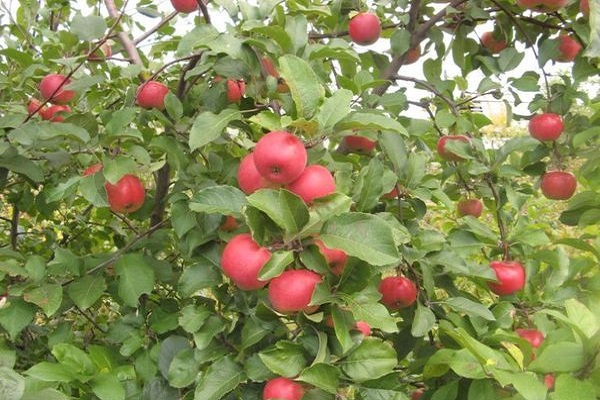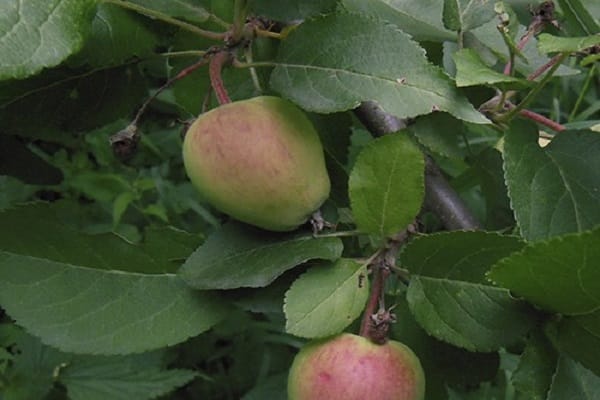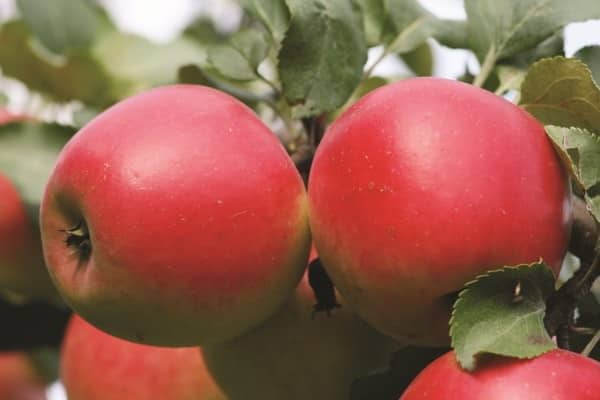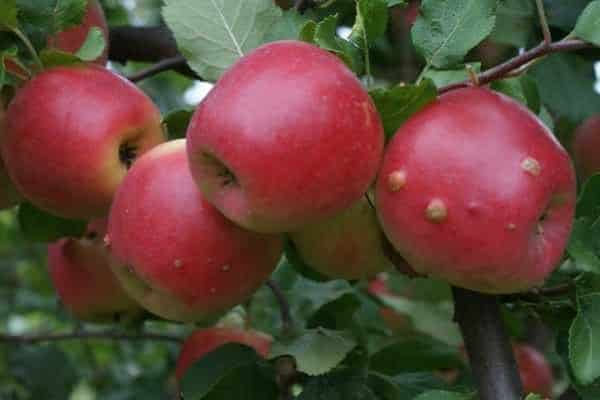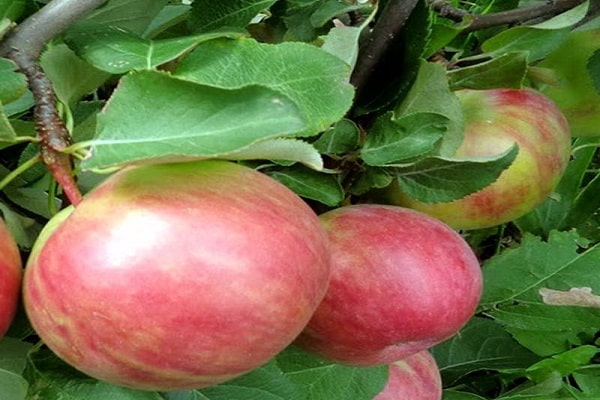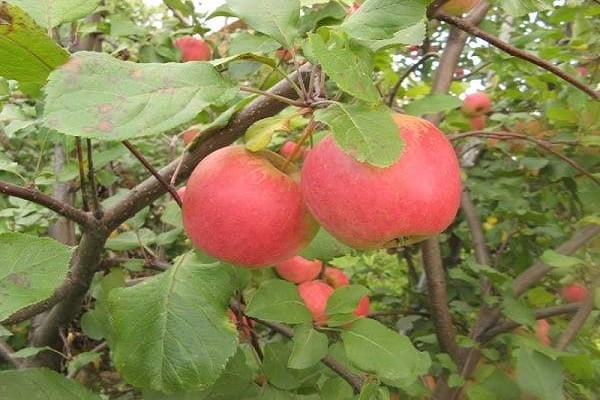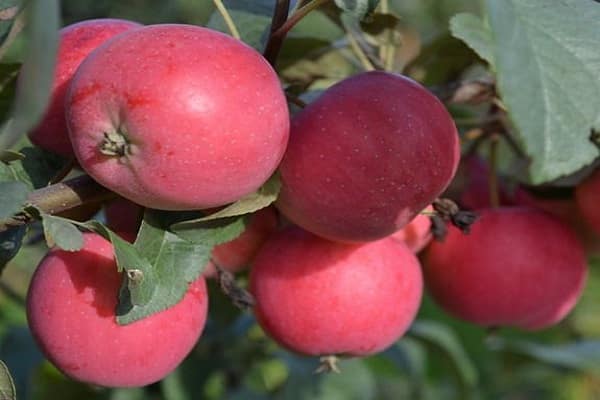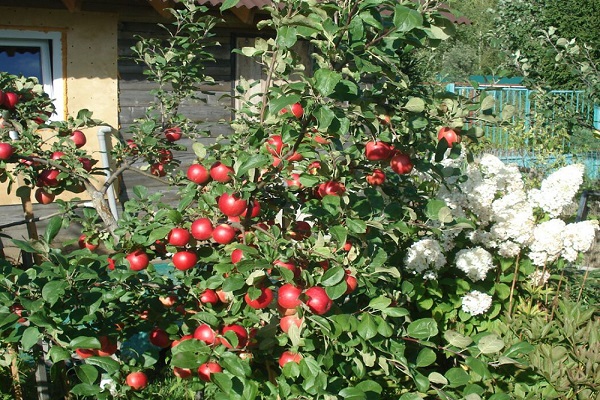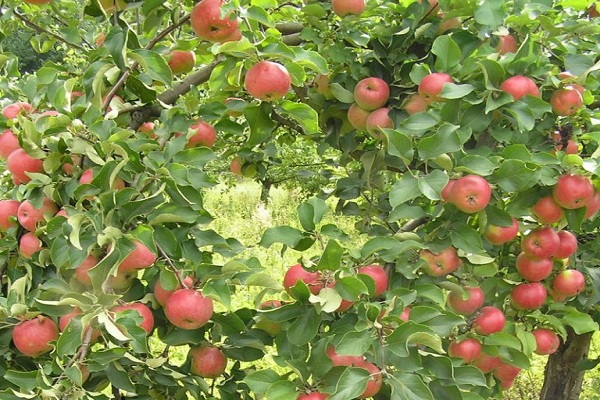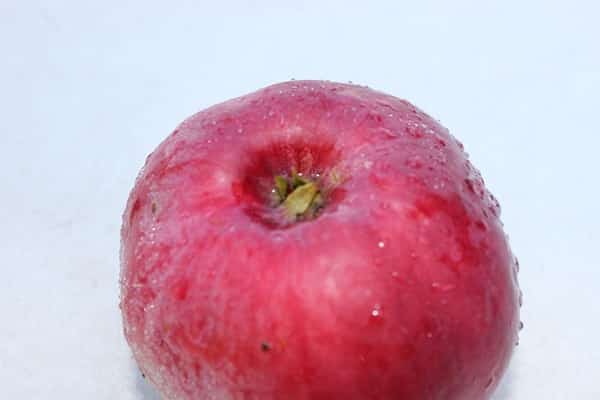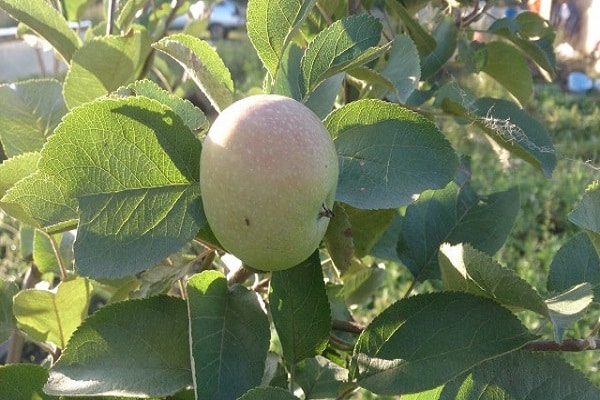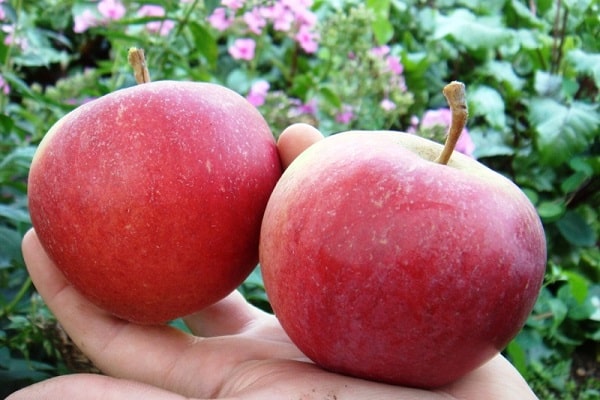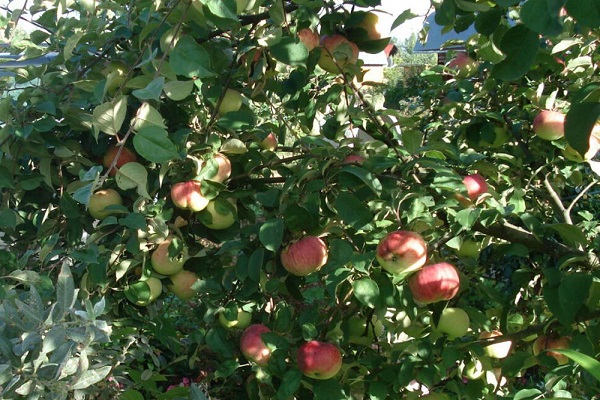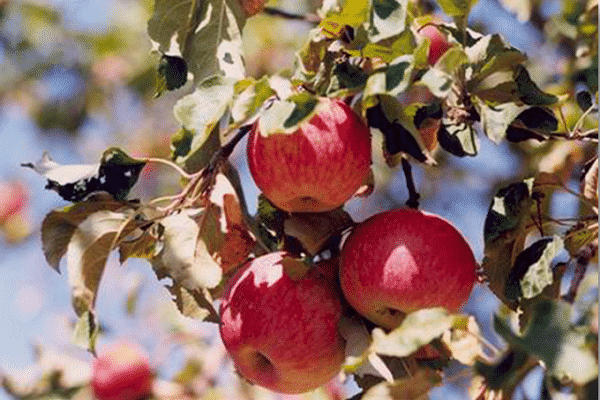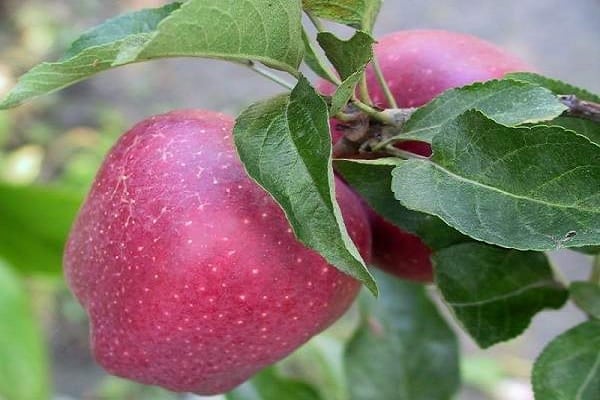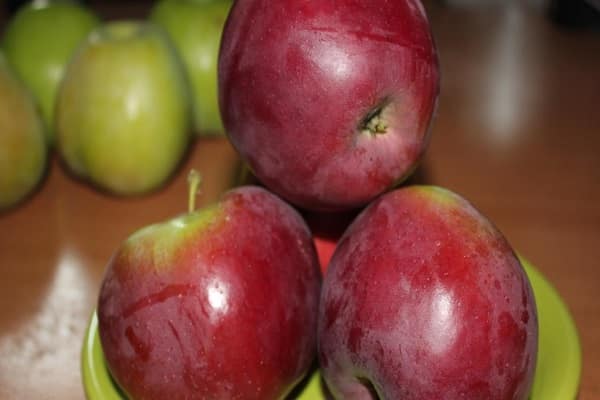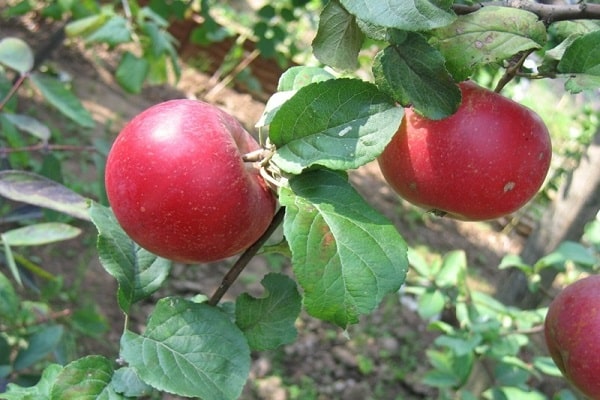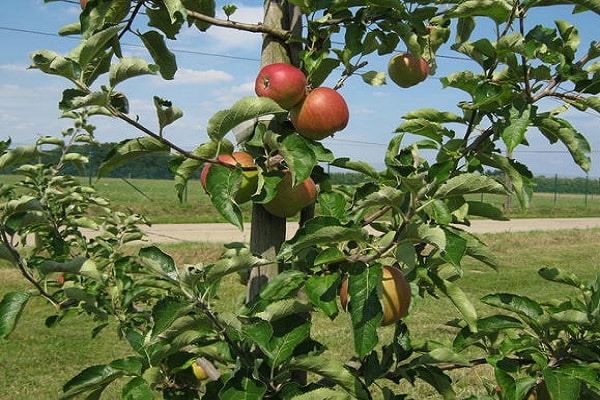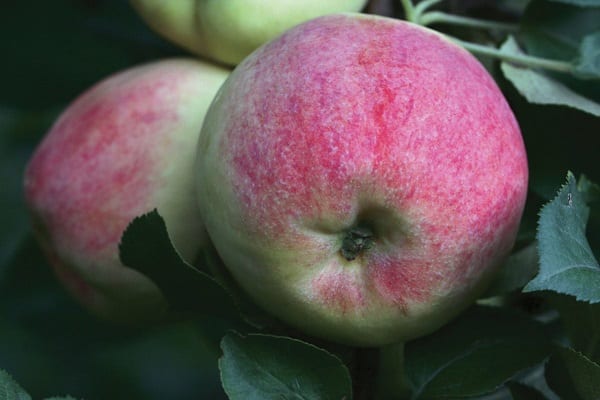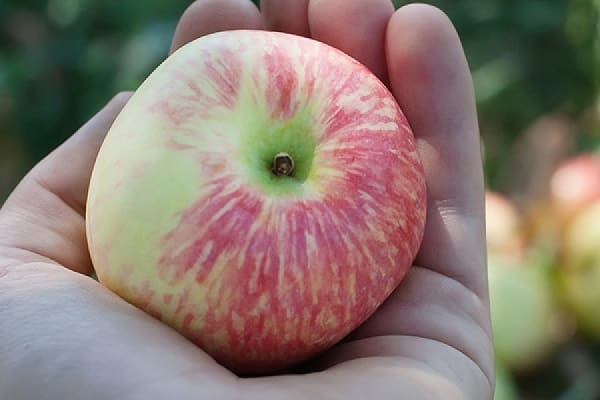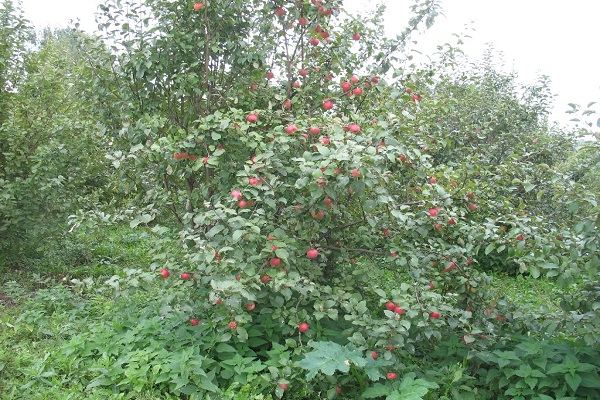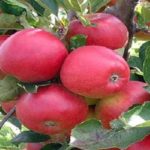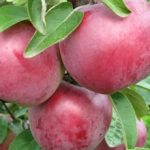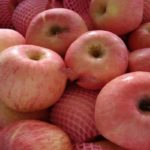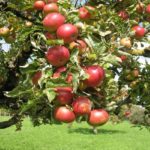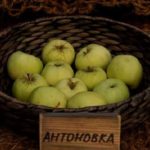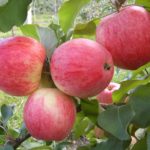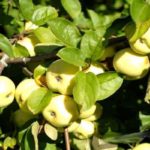For residents of the Urals and Siberia, it is difficult to choose an apple tree variety that would successfully grow and bear fruit in unfavorable climatic conditions. But breeding work at experimental stations provides summer residents with frost-resistant and disease-resistant crops. The Good News apple tree is considered an achievement of the Ural biologist L. Kotov, which has unpretentiousness to growing conditions and excellent taste of the fruit. The variety is valued for its versatility in using apples.
- Description of the variety
- Tree structure
- Advantages and disadvantages
- Varieties
- Apple tree standard Good news
- Blagovest
- Main characteristics
- Dimensions of an adult tree
- Flower pollination
- Growth
- Fruiting
- Frost resistance
- Resistance to diseases and pests
- Tasting qualities of apples
- What beneficial substances and nutrients are contained in an apple?
- Positive and negative consequences of eating fruits
- Tree planting
- Preparing the soil for planting seedlings
- Marking out the area for planting
- Soil preparation
- Digging a hole for seedlings
- Secrets of choosing seedlings
- Disembarkation dates
- Disembarkation procedure
- Agrotechnical measures
- Apple tree care
- Forming the crown
- What to do when flowering
- Soil irrigation
- Measures to protect apple trees from diseases and pests
- Fertilizer
- Pollination
- Ripening and fruiting
- Productivity
- Apple picking
- How to store
- Recipes for food and drinks
- Regional cultivation
- Siberia
- Altai region
- Ural
- Other regions
Description of the variety
The Good News apple tree was obtained by pollinating the Krasa Sverdlovsk variety. The winter type of plant received all the best qualities of the “parent”.
Tree structure
The tree trunk reaches 4 meters in height. The shoots are brown, slightly pubescent, and form a rounded crown. On branches with characteristic knees there are oval leaves, green, dark in tone.
In September, the fruits turn red and look like a barrel. A distinctive feature is their similarity in size.
Advantages and disadvantages
The Good News apple tree has many virtues. Gardeners like that the variety:
- withstands harsh winters;
- resistant to scab varieties;
- bears fruit with apples that have an attractive appearance and excellent taste;
- unpretentious in care.
The main thing for the gardener is that the harvested apples can be stored for a long time and can be fully used for preparing dishes and drinks.
Among the disadvantages of the crop, its susceptibility to other diseases of the fruit crop is noted. The tree requires constant pruning.
Varieties
Varieties of the variety are obtained by grafting.But at the same time, the quality of the fruit itself does not change.
Apple tree standard Good news
The standard apple tree is not much different from the main type. The semi-dwarf reaches an optimal size of 3 meters in height. The compact growth of shoots is noted on the tree. And the taste of apples is sweet and sour, and the appearance is excellent.
Blagovest
This variety is more suitable for growing in gardens of the Central and Chernozem regions. The crop carries a gene for immunity to scab. The round-shaped fruits are well preserved until spring without losing their taste.
Main characteristics
The Good News apple tree has a number of positive qualities, thanks to which the tree takes its rightful place in the garden. In addition to the decorative value of the tree itself, gardeners highly appreciate the taste and color of the fruit.
Dimensions of an adult tree
The size of the apple tree depends on what rootstocks it is grown on. If seedling crops are used, the trunk grows up to 4 meters. And the crown, when formed correctly, looks like a ball with a diameter of up to 2-3 meters.
Semi-dwarfs have medium-sized trees and crowns.
Flower pollination
The variety is a self-pollinating species. On inflorescences, the stamens and anthers are located at the same level. Winter apple trees are located nearby. For heat-loving people, another area of the garden is suitable.
Growth
The apple tree variety is of medium height, so growth occurs moderately. Shoots appear, evenly distributed on the tree.
Fruiting
Apple tree fruits reach technical maturity in the last ten days of September. The tree bears fruit annually, starting from 4 years of age.
Frost resistance
Thanks to zoning, the apple tree can withstand frosts down to minus 30-35. But it is important that the tree is protected from northern winds. Otherwise, freezing of the shoots is inevitable.It is better to cover young trees in the fall with spruce branches, wrap the trunk with roofing felt or material in several layers.
Resistance to diseases and pests
The Good News apple tree is resistant to 5 types of scab, but has average immunity to other infections. The variety must be protected from pests: aphids, codling moths, leaf rollers.
Tasting qualities of apples
Summer residents give a high rating to apple tree fruits - 4.8 points. This is also for the juiciness of the pulp, the harmony in the taste of sugar and acid content. The red color of the skin and creamy pulp allow you to make juice, preserves, and jams from apples.
What beneficial substances and nutrients are contained in an apple?
There are a lot of apples:
- gland;
- iodine;
- phosphorus;
- B vitamins;
- pectin;
- mineral salts.
To benefit from apple fruits, you need to eat 2-3 of them per day.
Positive and negative consequences of eating fruits
Eating apples is associated with a reduction in the development of atherosclerosis and heart attack. Apples are useful for those who suffer from rheumatic pain and gout. Fresh apple pulp applied to tissues affected by burns or frostbite can reduce the risk of inflammation. Apples are useful for anemia. They should be included in the menu for children, pregnant women who want to lose weight.
Patients with gastritis should not eat apples. Malic acid has a bad effect on the condition of tooth enamel. If you eat fruits during lunch, then increased gas formation is ensured.
Tree planting
Planting an apple tree is carried out taking into account preparatory measures and the correct timing of the procedure. They approach planting competently so that all stages are completed sequentially.
Preparing the soil for planting seedlings
The site in the garden for the fruit crop must be chosen at an elevation so that the groundwater lies at a depth of 2 meters from the surface of the earth. The place should not be exposed to cold winds. 3-4 buckets of humus, superphosphate and potassium salt. The fertilizer components are dug up along with the soil. The resulting blocks of earth must be broken.
Marking out the area for planting
Before planting seedlings, you need to mark the area where to place winter types and where summer types of apple trees. For the Good News variety, you need to prepare a place on the northeastern or northwestern slopes. It is best to place trees at a distance of 2-3 meters from each other, and measure 1 meter between rows.
Soil preparation
Before planting apple tree seedlings, the soil in the garden is plowed to a depth of 40 centimeters. After applying manure (4-6 kilograms) along with superphosphate - 50 grams, potassium salt - 30 grams and ammonium sulfate, thoroughly harrow the area.
Digging a hole for seedlings
The pit must be prepared at least 2-3 weeks in advance. If apple trees are planted in the spring, then autumn preparation of planting holes is necessary. When digging, the top layer of soil, which is more fertile, is folded on one side. The lower one is folded in a different place. The depth of the hole should be between 50-60 centimeters, and the diameter should be 70 centimeters. On loose soil, the holes are made wider. The bottom must be loosened.
Secrets of choosing seedlings
Apple tree seedlings should not be more than 2 years old. If the seedlings were buried, then before transportation the roots should be dipped in a mixture of earth and clay. In this case, the fibrous root system will not dry out. You can keep the seedling in water for 24 hours before planting. After examining the roots, remove dead and damaged parts.If the branches of the shoot are not branched, then cut off the top at a height of 40 centimeters.
Disembarkation dates
The best time to plant a Good News apple tree is in the spring before the buds open. Usually the deadline falls at the beginning of April. In autumn, the tree must be planted before October 10. If the seedlings are received later, it is better to bury them in grooves up to 50 centimeters deep. The root system of apple trees is carefully covered with earth, compacting the soil on top. For protection, you can put a layer of brushwood or material on top.
Disembarkation procedure
Planting begins by adding humus and mineral fertilizers to the hole, having first mixed them with the ground. Having filled the hole to 3 quarters, pour a mound from a bucket of humus or a nutritious top layer on top. Holding the seedling with one hand, pour soil with the other, shaking the apple tree periodically. Make sure that the root collar is at soil level or slightly higher. A peg is placed nearby to which an apple tree is tied.
It remains to compact the soil in the root circle, pressing it with the soles from the edge to the trunk of the tree. Then they make a roller to form a hole. At the end, water generously, up to 5 buckets per hole, apply a layer of mulch when the water is absorbed.
Agrotechnical measures
After planting, the main thing for the gardener will be to create a powerful and durable tree with the correct arrangement of branches. It is important to properly care for the soil in your garden.
Apple tree care
Only competent care of the apple tree will allow it to bear fruit abundantly and protect itself from frost in winter, diseases and pests during the growing season.
Forming the crown
There are two ways to trim the crown - shortening and thinning. If the shoots are heavily branched, do not prune or shorten the shoots by only 1 quarter of the length. By annually cutting off the growth on the branches, a rounded crown is formed.If the branches grow by 30 centimeters, then they are not touched.
They stop shortening after the apple tree begins to bear fruit, in the 4-5th year of life. If the shoots extend beyond the crown, they can be trimmed. Thinning leads to lightening of the crown, and the fruiting zone shifts to the base of the shoots.
What to do when flowering
When the apple tree blooms in May, you need to pay attention to supplying the tree with energy. After watering, fertilizers are applied. You can use chicken manure in a ratio of 1:12 or mullein - 1:5. Of the mineral complexes, superphosphate and potassium salt are important. Feeding is needed both during flowering and after it. If regular fertilizing is carried out, the fruits will set better.
To prevent flowers from being damaged by frost, you need to prepare smoke piles in the garden. They are lit when the air temperature drops to +2 degrees. They also use spraying of plants and watering them with water.
Soil irrigation
Moisture plays an important role for the apple tree. During dry summers, it is necessary to water 5-6 times. Additionally, you need to moisten the soil 3 weeks before you begin to harvest. One tree needs from 6 to 10 buckets of water.
Measures to protect apple trees from diseases and pests
It is imperative to take preventive measures for the Good News apple tree in order to protect against attacks by pests and pathogenic microorganisms. Diseases can be prevented by:
- regularly pruning damaged and diseased shoots;
- weeding the garden;
- loosening the root circle constantly when compacting the soil;
- digging up the site in autumn and spring;
- clearing the garden of fallen leaves.
Spraying with Bordeaux mixture or copper sulfate solution will help the tree stay healthy.
Fertilizer
For 1 square meter of planted apple trees that have entered the fruiting period, add 3 kilograms of manure, 50 grams of superphosphate, 15 grams of ammonium nitrate and potassium salt before loosening the soil. The following is added into the grooves laid along the rows of fruit trees:
- after flowering, bird droppings, dissolved in a concentration of 1:12;
- in July - complexes with phosphorus and potassium;
- a bucket of fertilizer for 2 meters of furrow.
Less fertile soils are fertilized more.
Pollination
The Good News variety does not require pollinators. It belongs to the self-fertile plants. But you can plant other varieties of winter apple trees nearby.
Ripening and fruiting
Apples ripen in the 4th-5th year of the tree’s life.. At first there are few of them, but every year the number of fruits grows. Apples ripen towards the end of September, when the harvest begins.
Productivity
Up to 40 kilograms of apples are harvested from one tree of this variety, and with good care, even more. You can save Good News apples all winter, until spring.
Apple picking
To avoid damaging the fruit branches, remove the apples carefully. Holding the fruit with one hand, turn it around the stalk. The other hand holds a twig.
How to store
The apples are sorted, each one is wrapped in paper and placed in wooden boxes. The volume in one container should not exceed 15-30 kilograms. Fruits are best preserved in a cool, dark room with good ventilation. The temperature in the basement should be from 0 to +1 degrees.
Recipes for food and drinks
Many preparations for the winter are prepared from Good News apples:
- To make jam, take fruits that have been cleared of seeds and skin. They are cut, then blanched in boiling water for 10-15 minutes. Then immediately immerse in cold water. Per kilogram of raw materials, 1.3 kilograms of sugar are taken.Prepare syrup, add apples, bring to a boil and cook for 8-10 minutes. Then leave for 10 hours, then cook until tender.
- Apple juice can be prepared in a pressure cooker or juicer. Sugar is added to the juice to taste. Be sure to pasteurize the workpieces over medium heat for 10-20 minutes.
- To make jam from apples, first boil them and rub them through a sieve. The resulting puree is mixed with sugar, taking 2/3 cup per 1 cup of apple mass. Cook in an enamel pan over low heat, stirring constantly. The finished product should be brown.
Store apple preparations at a temperature not exceeding 10 degrees Celsius.
Regional cultivation
In different areas, apple trees are grown in accordance with climatic conditions. It is especially important to properly prepare the tree for winter.
Siberia
The Good News apple tree easily takes root in Siberian gardens, withstanding frosts in winter. You just need to cover the root system of the tree so that it is not damaged by the cold.
Altai region
In Altai, winters are milder, so you can grow crops without worrying about how they will survive the winter. The apples will have time to ripen, and you can enjoy them all winter.
Ural
The variety is zoned for the Urals, so there will be no problems with growing apple trees. Summer residents have been cultivating the tree for a long time and give high marks to the apple tree.
Other regions
The crop is also suitable for cultivation in areas with warm climates. Fruiting can occur as early as August, and in early September the apples will be fully ripe. Thanks to sunny weather, the fruits will accumulate more sugar.

